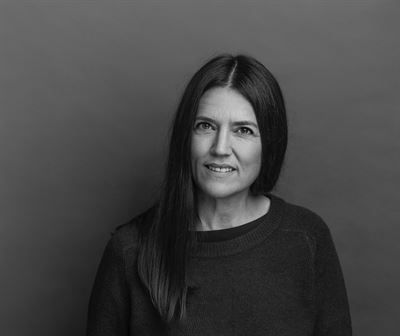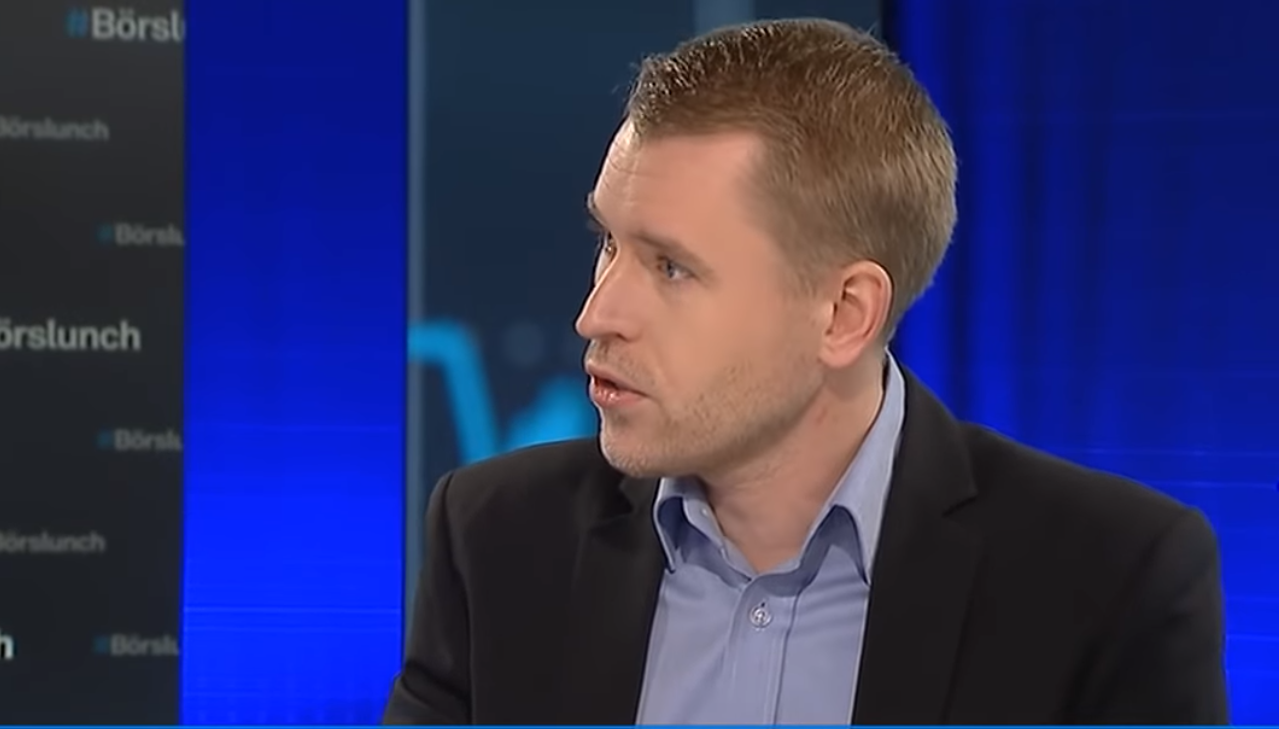Marknadsnyheter
Imfinzi plus chemotherapy further improved overall survival benefit in advanced biliary tract cancer in the TOPAZ-1 Phase III trial, reducing the risk of death by 24% in additional follow-up
HIMALAYA Phase III trial exploratory results support the benefit of tremelimumab added to Imfinzi in unresectable liver cancer regardless of aetiology.
Updated results from the TOPAZ-1 Phase III trial showed AstraZeneca’s Imfinzi (durvalumab), in combination with standard-of-care chemotherapy demonstrated a clinically meaningful and durable overall survival (OS) benefit as a treatment for patients with advanced biliary tract cancer (BTC).
These results from TOPAZ-1, the first Phase III trial to show improved OS with an immunotherapy combination in this setting, will be presented today at the European Society for Medical Oncology (ESMO) Congress 2022 in Paris (abstract #56P).
The updated results for Imfinzi plus chemotherapy (gemcitabine plus cisplatin) showed enhanced clinical efficacy after an additional 6.5 months of follow-up, demonstrating a 24% reduction in the risk of death versus chemotherapy alone (based on a hazard ratio [HR] of 0.76; 95% confidence interval [CI], 0.64–0.91). Updated median OS was 12.9 months versus 11.3 with chemotherapy. More than two times as many patients were estimated to be alive at two years versus chemotherapy alone (23.6% versus 11.5%). Results were seen across all prespecified subgroups, regardless of disease status, tumour location or PD-L1 expression. In addition, OS benefit was observed in patients whose tumours stayed the same size (stable disease) as well as in patients whose tumours got smaller or disappeared (responders).
The safety profile of Imfinzi plus chemotherapy continued to be well-tolerated, with no new safety signals observed with longer follow-up. Grade 3 or 4 treatment-related AEs were experienced by 60.9% of patients treated with Imfinzi and chemotherapy, and by 63.5% of patients receiving chemotherapy alone. Imfinzi plus chemotherapy did not increase the discontinuation rate due to adverse events (AEs) compared to chemotherapy alone (8.9% for the Imfinzi combination versus 11.4% for chemotherapy).
Do-Youn Oh, MD, PhD, Professor, Division of Medical Oncology, Department of Internal Medicine at Seoul National University Hospital and Seoul National University College of Medicine, and principal investigator in the TOPAZ-1 Phase III trial, said: “It’s exciting to see the improved overall survival delivered by durvalumab plus chemotherapy over the current standard of care for patients with advanced biliary tract cancer after a median follow-up of nearly two years. With limited treatment advances over the past decade, these patients have long faced a dismal prognosis. For the first time, an immunotherapy-based combination has shown the ability to alter the course of treatment for this disease and should become the new standard of care.”
Susan Galbraith, Executive Vice President, Oncology R&D, AstraZeneca, said: “These longer-term data reinforce the survival benefit and well-tolerated safety profile of Imfinzi added to standard-of-care chemotherapy for patients with advanced biliary tract cancer. With these results, the exploratory data from the HIMALAYA trial and the recent FDA approval based on the TOPAZ-1 trial, we are continuing to advance our commitment to extend survival for patients with gastrointestinal tumours who desperately need new treatment options.”
Summary of updated results: TOPAZ-1
| Imfinzi + chemotherapy (N=341) | Chemotherapy (n=344) | |
| OSi,ii | ||
| Median OS (95% CI) (in months) | 12.9 | 11.3 |
| HR (95% CI)iii | 0.76 (0.64, 0.91) | |
| OS rate at 12 months (95% CI) (%)iv | 54.3 | 47.1 |
| OS rate at 24 months (95% CI) (%) | 23.6 | 11.5 |
| OS by BoRv,vi | ||
| Median OS (95% CI), responders, months | 19.5 | 15.7 |
| HR (95% CI) respondersiii | 0.69 (0.46, 1.04) | |
| Median OS (95% CI), stable disease (SD), months | 13.6 | 11.5 |
| HR (95% CI) SDiii | 0.77 (0.62, 0.96) | |
| 12-month OS rate in responders (95% CI) (%)iv | 75.8 | 75.0 |
| 12-month OS rate in SD (95% CI) (%)iv | 57.5 | 48.0 |
| 24-month OS rate in responders (95% CI) (%)iv | 40.6 | 20.5 |
| 24-month OS rate in SD (95% CI) (%)iv | 20.7 | 10.6 |
OS, overall survival; HR, hazard ratio; CI, confidence interval; BoR, best overall response; SD, stable disease
- 6.5 months of additional follow-up (data cut-off: 25 February 2022) after the primary analysis, with 76.9% overall OS event maturity
- At data cut-off for this analysis, median (95% CI) follow-up time (calculated using the inverse Kaplan-Meier techniques with the censoring indicator of OS reversed) was 23.4 (20.6–25.2) months for Imfinzi plus chemotherapy and 22.4 (21.4–23.8) months for chemotherapy
- HRs were calculated using a Cox proportional hazards model
- OS rates calculated using Kaplan-Meier techniques
- To avoid immortal time bias, only participants surviving ≥ 3 months were included in this OS by best objective response analysis
- BoR was assessed by the investigator per Response Evaluation Criteria In Solid Tumours (RECIST) v1.1 in all randomised participants with measurable disease at baseline and defined as response (complete response or partial response), SD or progressive disease (PD); BoR was determined based on the IA data cut-off (11 August 2021)
Earlier this month, Imfinzi in combination with chemotherapy was granted approval in the US as a treatment for adults with locally advanced or metastatic BTC based on results from TOPAZ-1. Regulatory applications are also currently under review in Europe, Japan and several other countries based on the TOPAZ-1 results.
In October 2021, the TOPAZ-1 trial met the OS primary endpoint at a predefined interim analysis, reducing the risk of death by 20% versus chemotherapy (based on a HR of 0.80; 95% CI, 0.66-0.97; 2-sided p=0.021).
HIMALAYA Phase III trial exploratory analysis by aetiology in unresectable hepatocellular carcinoma at ESMO
Also at ESMO, an exploratory analysis from the HIMALAYA Phase III trial evaluated the impact of disease causes on outcomes for patients with unresectable hepatocellular carcinoma (abstract #714P). Data from HIMALAYA suggest a trend for OS benefit over sorafenib with the STRIDE regimen regardless of the underlying disease cause (hepatitis B virus [HBV], hepatitis C virus [HCV] or nonviral). Similar trends were observed with Imfinzi versus sorafenib across subsets.
In 2021, positive results from the HIMALAYA Phase III trial showed a single priming dose of tremelimumab, an anti-CTLA4 antibody, added to Imfinzi (STRIDE regimen) demonstrated a statistically significant and clinically meaningful improvement in OS versus sorafenib as a 1st-line treatment for patients with unresectable hepatocellular carcinoma (HCC) who had not received prior systemic therapy and were not eligible for localised treatment. Patients treated with the STRIDE regimen experienced a 22% reduction in the risk of death versus sorafenib (based on a HR of 0.78, 96.02% CI 0.65-0.93; p=0.0035). Nearly one in three (31%) patients were still alive at three years versus one in five (20%) for sorafenib.
When subsets were adjusted for prognostic factor imbalances, patients with HBV treated with the STRIDE regimen experienced a 36% reduction in the risk of death versus sorafenib (based on a HR of 0.64, 95% CI 0.47-0.86). Median duration of response was 25.69 months versus 17.00 months for sorafenib. Patients with HCV treated with the STRIDE regimen experienced an 11% reduction in the risk of death versus sorafenib (based on a HR of 0.89; 95% CI 0.63-1.25). Median duration of response was 13.5 months versus 15.7 months for sorafenib. Nonviral patients treated with the STRIDE regimen experienced a 23% reduction in the risk of death versus sorafenib (based on a HR of 0.77; 95% CI 0.59-1.00). Median duration of response was 13.21 months versus 6.01 months for sorafenib. The safety profiles of STRIDE and durvalumab were consistent across aetiology subgroups.
In the past, viral HCC (disease associated with cirrhosis related to chronic hepatitis B or hepatitis C) has been the primary aetiology of the disease. Over the last two decades, the prevalence of non-viral HCC (disease associated with non-viral factors including liver disease, obesity and diabetes) has significantly increased. HIMALAYA is the only Phase III trial to demonstrate a survival benefit for immunotherapy in participants with non-viral HCC.1,2
The STRIDE regimen is under review by global regulatory authorities in unresectable HCC based on the results of the HIMALAYA trial.
Notes
Biliary tract cancer
Biliary tract cancer (BTC) is a group of rare and aggressive gastrointestinal (GI) cancers that form in the cells of the bile ducts (cholangiocarcinoma), gallbladder or ampulla of Vater (where the bile duct and pancreatic duct connect to the small intestine).3,4 Approximately 50,000 people in the US, Europe and Japan and about 210,000 people worldwide are diagnosed with BTC each year.5-7 These patients have a poor prognosis, with approximately 5% to 15% of patients with BTC surviving five years.8
Cholangiocarcinoma is more common in China and Thailand and is on the rise in Western countries.3,8 Gallbladder cancer is more common in certain regions of South America, India and Japan.9
Early-stage BTC affecting the bile ducts and gallbladder often presents without clear symptoms and most new cases of BTC are therefore diagnosed at an advanced stage, when treatment options are limited and the prognosis is poor.8-10
Liver cancer
About 75% of all primary liver cancers are HCC.11 Between 80-90% of all patients with HCC also have cirrhosis, which is primarily caused by infection with the hepatitis B or C viruses. Chronic liver diseases are associated with inflammation that over time can lead to the development of HCC.12
More than half of HCC patients are diagnosed at advanced stages of the disease, often when symptoms first appear.13 A critical unmet need exists for patients with HCC who face limited treatment options. The unique immune environment of liver cancer provides clear rationale for investigating medications that harness the power of the immune system to treat HCC.13
TOPAZ-1
TOPAZ-1 is a randomised, double-blind, placebo controlled, multicentre, global Phase III trial of Imfinzi in combination with chemotherapy (gemcitabine plus cisplatin) versus placebo in combination with chemotherapy as a 1st-line treatment in 685 adult patients with unresectable, locally advanced or metastatic BTC including intrahepatic and extrahepatic cholangiocarcinoma, and gallbladder cancer. Patients with ampullary carcinoma were excluded.
The primary endpoint is overall survival and key secondary endpoints included progression-free survival, objective response rate and safety. The trial was conducted in 105 centres across 17 countries including in the US, Europe, South America and several countries in Asia including South Korea, Thailand, Japan and China.
HIMALAYA
HIMALAYA was a randomised, open-label, multicentre, global Phase III trial of Imfinzi monotherapy and the STRIDE regimen, comprising a single priming dose of tremelimumab 300mg added to Imfinzi 1500mg followed by Imfinzi every four weeks versus sorafenib, a standard-of-care multi-kinase inhibitor.
The trial included a total of 1,324 adult patients with unresectable HCC who had not been treated with prior systemic therapy and were not eligible for locoregional therapy (treatment localised to the liver and surrounding tissue).
The trial was conducted in 190 centres across 16 countries, including in the US, Canada, Europe, South America and Asia. The primary endpoint was OS for STRIDE versus sorafenib and key secondary endpoints included OS for Imfinzi versus sorafenib, objective response rate and progression-free survival (PFS) for STRIDE and for Imfinzi alone.
Imfinzi
Imfinzi (durvalumab) is a human monoclonal antibody that binds to the PD-L1 protein and blocks the interaction of PD-L1 with the PD-1 and CD80 proteins, countering the tumour’s immune-evading tactics and releasing the inhibition of immune responses.
Imfinzi is the only approved immunotherapy in the curative-intent setting of unresectable, Stage III non-small cell lung cancer (NSCLC) in patients whose disease has not progressed after chemoradiation therapy, and is the global standard of care in this setting based on the PACIFIC Phase III trial.
Imfinzi is currently approved in a number of countries in multiple tumour types including for the treatment of extensive-stage small cell lung cancer (ES-SCLC); for previously treated patients with advanced bladder cancer and for locally advanced or metastatic BTC in combination with chemotherapy (gemcitabine plus cisplatin).
Since the first approval in May 2017, more than 100,000 patients have been treated with Imfinzi.
As part of a broad development programme, Imfinzi is being tested as a single treatment and in combination with other anti-cancer treatments for patients with SCLC, NSCLC, bladder cancer, several GI cancers, cervical cancer, ovarian cancer, endometrial cancer, and other solid tumours.
Imfinzi combinations have demonstrated clinical benefit in multiple additional cancer settings with positive Phase III trials in unresectable advanced liver cancer (HIMALAYA), metastatic NSCLC (POSEIDON) and resectable NSCLC (AEGEAN). The data from HIMALAYA and POSEIDON are under review with global health authorities.
Tremelimumab
Tremelimumab is a human monoclonal antibody and potential new medicine that targets the activity of cytotoxic T-lymphocyte-associated protein 4 (CTLA-4). Tremelimumab blocks the activity of CTLA-4, contributing to T-cell activation, priming the immune response to cancer and fostering cancer cell death.
Beyond HIMALAYA, tremelimumab is being tested in combination with Imfinzi across multiple tumour types including in bladder cancer (VOLGA and NILE), locoregional HCC (EMERALD-3) and SCLC (ADRIATIC).
Tremelimumab is also under review by global regulatory authorities in combination with Imfinzi in metastatic NSCLC based on the results of the POSEIDON Phase III trial.
AstraZeneca in GI cancers
AstraZeneca has a broad development programme for the treatment of GI cancers across several medicines and a variety of tumour types and stages of disease. In 2020, GI cancers collectively represented approximately 5.1 million new cancer cases leading to approximately 3.6 million deaths.14
Within this programme, the Company is committed to improving outcomes in gastric, liver, BTC, oesophageal, pancreatic, and colorectal cancers.
Imfinzi is being assessed in combinations in liver, BTC, oesophageal and gastric cancers in an extensive development programme spanning early to late-stage disease.
The Company aims to understand the potential of Enhertu (trastuzumab deruxtecan), a HER2-directed antibody drug conjugate, in the two most common GI cancers, colorectal and gastric cancers. Enhertu is jointly developed and commercialised by AstraZeneca and Daiichi Sankyo.
Lynparza (olaparib) is a first-in-class PARP inhibitor with a broad and advanced clinical trial programme across multiple GI tumour types including pancreatic and colorectal cancers. Lynparza is developed and commercialised in collaboration with MSD (Merck & Co., Inc. inside the US and Canada).
AstraZeneca in immuno-oncology (IO)
Immunotherapy is a therapeutic approach designed to stimulate the body’s immune system to attack tumours. The Company’s Immuno-Oncology (IO) portfolio is anchored in immunotherapies that have been designed to overcome evasion of the anti-tumour immune response. AstraZeneca is invested in using IO approaches that deliver long-term survival for new groups of patients across tumour types.
The Company is pursuing a comprehensive clinical-trial programme that includes Imfinzi as a single treatment and in combination with tremelimumab and other novel antibodies in multiple tumour types, stages of disease, and lines of treatment, and where relevant using the PD-L1 biomarker as a decision-making tool to define the best potential treatment path for a patient.
In addition, the ability to combine the IO portfolio with radiation, chemotherapy, and targeted small molecules from across AstraZeneca’s oncology pipeline, and from research partners, may provide new treatment options across a broad range of tumours.
AstraZeneca in oncology
AstraZeneca is leading a revolution in oncology with the ambition to provide cures for cancer in every form, following the science to understand cancer and all its complexities to discover, develop and deliver life-changing medicines to patients.
The Company’s focus is on some of the most challenging cancers. It is through persistent innovation that AstraZeneca has built one of the most diverse portfolios and pipelines in the industry, with the potential to catalyse changes in the practice of medicine and transform the patient experience.
AstraZeneca has the vision to redefine cancer care and, one day, eliminate cancer as a cause of death.
AstraZeneca
AstraZeneca (LSE/STO/Nasdaq: AZN) is a global, science-led biopharmaceutical company that focuses on the discovery, development, and commercialisation of prescription medicines in Oncology, Rare Diseases, and BioPharmaceuticals, including Cardiovascular, Renal & Metabolism, and Respiratory & Immunology. Based in Cambridge, UK, AstraZeneca operates in over 100 countries and its innovative medicines are used by millions of patients worldwide. Please visit astrazeneca.com and follow the Company on Twitter @AstraZeneca.
Contacts
For details on how to contact the Investor Relations Team, please click here. For Media contacts, click here.
References
- Toyoda H, et al. Improved survival of viral hepatocellular carcinoma but not non-viral hepatocellular carcinoma from 2000 to 2020: A multi-centre cohort study of 6007 patients from high-volume academic centres in Japan. Aliment Pharmacol Ther. 2022; 56: 694– 701.
- Hamed MA, et al. Non-viral factors contributing to hepatocellular carcinoma. World J Hepatol. 2013 Jun 27;5(6):311-22.
- Marcano-Bonilla L, et al. Biliary tract cancers: epidemiology, molecular pathogenesis and genetic risk associations. CCO. 2016;5(5).
- ESMO. What is Biliary Tract Cancer. Available at: https://www.esmo.org/content/download/266801/5310983/1/EN-Biliary-Tract-Cancer-Guide-for-Patients.pdf. Accessed September 2022.
- Siegel RL. Cancer statistics, 2020. CA Cancer J Clin. 2020;70:7-30.
- ECIS – European Cancer Information System. Available: https://ecis.jrc.ec.europa.eu/explorer.php Accessed September 2022.
- Kohei Nakachi, et al. Hepatobiliary and Pancreatic Oncology Group of the Japan Clinical Oncology Group, A randomized Phase III trial of adjuvant S-1 therapy vs. observation alone in resected biliary tract cancer: Japan Clinical Oncology Group Study (JCOG1202, ASCOT), Japanese Journal of Clinical Oncology. 2018,48:392-395.
- Turkes F, et al. Contemporary Tailored Oncology Treatment of Biliary Tract Cancers. Gastroenterol Res Pract. 2019;2019:7698786.
- Rawla P, et al. Epidemiology of gallbladder cancer. Clin Exp Hepatol. 2019;5(2):93-102.
- Banales JM, et al. Cholangiocarcinoma 2020: the next horizon in mechanisms and management. Nature Reviews Gastroenterology & Hepatology. 2020; 17: 557-588.
- ASCO. Liver Cancer: View All Pages. Available at: https://www.cancer.net/cancer-types/liver-cancer/view-all. Accessed September 2022.
- Tarao K, et al. Real impact of liver cirrhosis on the development of hepatocellular carcinoma in various liver diseases—meta‐analytic assessment. Cancer Med. 2019;8(3):1054-1065.
- Colagrande S, et al. Challenges of advanced hepatocellular carcinoma. World J Gastroenterol. 2016;22(34):7645-7659.
- WHO. World Cancer Fact Sheet. Available at: https://gco.iarc.fr/today/data/factsheets/populations/900-world-fact-sheets.pdf. Accessed September 2022.
Marknadsnyheter
Regeringen föreslår lättnader i byggkraven för studentbostäder
Regeringen har beslutat om en lagrådsremiss med förslag till lättnader i byggkraven för studentbostäder. Syftet är att öka möjligheterna till flexibilitet vid byggandet.
– På många studieorter är det svårt för studenter att hitta boende. Därför behöver byggregelverket förenklas. Syftet är att möjliggöra för fler studentbostäder genom sänkta byggkostnader och ökad flexibilitet, säger infrastruktur- och bostadsminister Andreas Carlson.
Förslaget innebär att det blir möjligt att göra undantag från kraven på tillgänglighet och användbarhet i en byggnad som innehåller studentbostäder. Undantagen ska kunna tillämpas vid både nyproduktion och vid ändring av en byggnad.
Det ska vara möjligt att göra undantag för högst 80 procent av studentbostäderna i ett byggprojekt. Minst 20 procent av studentbostäderna ska fortfarande uppfylla gällande krav på tillgänglighet och användbarhet för personer med nedsatt rörelse- eller orienteringsförmåga.
Lagändringen ger större flexibilitet vid byggande av studentbostäder och skapar fler tänkbara sätt att utforma planlösningar. Till exempel kan bostadsytan minskas och fler bostäder rymmas inom en given yta.
De föreslagna undantagen ska inte hindra personer med funktionsnedsättning att vara delaktiga i sociala sammanhang. En studentbostad som omfattas av undantagen ska kunna besökas av en person med nedsatt rörelse- eller orienteringsförmåga.
Regeringen breddar också definitionen av studentbostäder till att inkludera all vuxenutbildning för att göra det möjligt för fler kommuner att erbjuda studentbostäder.
Förslagen föreslås träda i kraft den 1 juli 2025.
Lagrådsremissen: Lättnader i byggkraven för studentbostäder – Regeringen.se
Presskontakt
Ebba Gustavsson
Pressekreterare hos infrastruktur- och bostadsminister Andreas Carlson
Telefon (växel) 08-405 10 00
Mobil 076-12 70 488
ebba.gustavsson@regeringskansliet.se
Marknadsnyheter
“Vi behöver tillsammans enas om vettiga avtal, som sätter standard för branschen”


Sveriges Radios Kulturnytt gör just nu en mycket välkommen granskning av villkoren i musikbranschen. Igår lyftes artisten Siw Malmkvists situation med ett avtal som inte förnyats på över 60 år. Hennes situation är tyvärr långt ifrån unik. Musikerförbundet har länge uppmärksammat att majorbolagen fortsätter att betala extremt låga royaltynivåer till artister vars kontrakt skrevs på 1960-talet – en tid då digital streaming inte existerade.
– Jag kan intyga att artisterna som talar ut i P1 är långt ifrån ensamma om sin situation och vi uppmanar deras artistkollegor att gå ut med sitt tydliga stöd till de som vågar bryta tystnaden om oskäliga ersättningar, säger Musikerförbundets ordförande Karin Inde.
Musiker och artister skapar det värde som skivbolagen tjänar pengar på, men ändå ser vi gång på gång hur bolagen behåller stora delar av intäkterna. Att en av Sveriges mest folkkära artister, med en karriär som sträcker sig över decennier, fortfarande har en oskälig royalty är ett tydligt bevis på branschens obalans.
– Tystnadskulturen kring prissättning är enbart bra för bolagen. Både artister och musiker skulle verkligen tjäna på att dela med sig till varandra om hur betalningar och dealar verkligen ser ut. Förstås i trygga, egna rum. Det är bara bolagen som tjänar på att vi inte pratar med varandra om pengar, säger Karin Inde.
Stort tack till de modiga artister som ser till att lyfta problematiken! För att vi ska få till en i grunden mer rättvis musikbransch behöver de stora parterna i sammanhanget – skivbolagen, musikerna och artisterna – göra som de flesta andra svenska branscher lyckas med:
– Vi behöver tillsammans enas om vettiga och balanserade avtal, som sätter standard för branschen. Musikerförbundet är redo att göra vår del i arbetet för bättre villkor i musikbranschen, frågan är om skivbolagen är redo, säger Karin Inde.
Karin Inde
Förbundsordförande
karin.inde@musikerforbundet.se
+46 (0)704447228
Musikerförbundet är fackförbundet för professionella musiker och artister. Vi arbetar för förbättrade upphovsrättsliga och arbetsrättsliga villkor och för att våra medlemmar ska få en rättvis del av de värden de skapar i samhället.
Marknadsnyheter
Bönor från egen kaffeskog, sump till jord – Viking Lines nya kaffe gör gott på många olika sätt


Viking Lines resenärer dricker varje år 8,5 miljoner koppar kaffe. Nu satsar rederiet på ett helt nytt kaffe som ger minskade klimatutsläpp och bättre levnadsvillkor för odlarna. Kaffet från Slow Forest odlas på rederiets egen odling i Laos utan kemiska gödningsmedel, handplockas och rostas därefter i Danmark.
Allt kaffe som serveras på Viking Lines fartyg är nu hållbart producerat Slow Forest-kaffe, odlat på rederiets 75 hektar stora odling på högplatåerna i Laos och rostat i Danmark. Kaffeplantorna odlas bland träd på återbeskogad mark, i stället för på traditionellt skövlade plantager. Viking Lines odling ligger i en kolsänka där målsättningen är att plantera 30 000 träd, vilket innebär nästan 400 träd per hektar. Kaffeskogen förbättrar också den lokala biologiska mångfalden i området.
Odlingen, bearbetningen och rostningen av kaffet hanteras av Slow Forest Coffee. För företaget är det viktigt att produktionskedjan är rättvis och transparent. Utöver miljöfördelarna erbjuder Slow Forest bättre lönevillkor och sjukersättning för byns odlare.
”Den traditionella kaffetillverkningens koldioxidavtryck är stort och merparten av intäkterna går till Europa i stället för produktionsländerna. Vi ville göra annorlunda. Våra kunder vill göra hållbara val, och nu kan de njuta av sitt kaffe med bättre samvete än någonsin tidigare,” berättar Viking Lines restaurangchef Janne Lindholm.
Bönorna till Slow Forest-kaffet får sakta mogna i skuggan av träden, utan kemiska gödningsmedel. De plockas också för hand, vilket avsevärt förbättrar kaffets kvalitet och smak. Viking Lines nya kaffe består till 100 procent av Arabica-bönor, med en balanserad syrlighet samt smak av nötter och choklad. Rostningsprofilen har skapats av den världsberömda danska rostningsmästaren Michael de Renouard.
”Vi valde en mörkrost till fartygets kaffe, vilket passar både finländarnas och svenskarnas nuvarande smakpreferenser gällande rostning. Finländarnas smak gällande kaffe har under de senaste åren utvecklats mot en mörkare rostning. Innan vi gjorde vårt slutgiltiga val testades det nya kaffet i Viking Cinderellas bufférestaurang och personalmässen – och båda testgrupperna gav toppbetyg. Då 8,5 miljoner koppar kaffe bryggs varje år kan inget lämnas åt slumpen!” säger Janne Lindholm.
Viking Lines hållbarhetsmål stannar inte vid produktionskedjan. Kaffesump från fartygen återvinns nämligen som råmaterial för trädgårdsjord. Detta minskar avsevärt användningen av jungfrulig torv vid tillverkningen av mylla.
”Vi har som mål att allt som tagits ombord på fartygen som är möjligt att återvinna ska återanvändas eller återvinnas. Det gäller inte bara kaffet utan även matavfall och till exempel textilier som tas ur bruk. Ett bra exempel på vårt livscykeltänkande är att frityrolja från fartygets restauranger blir till biobränsle för den finska sjöfartsindustrin,” säger Viking Lines hållbarhetschef Dani Lindberg.
Slow Forest Coffee – 5 fakta:
- Slow Forest Coffee är ett kaffeföretag som verkar i Laos, Vietnam och Indonesien i samarbete med över 500 lokala kaffeodlare.
- Företaget grundades år 2019 av Pinja Puustjärvi, driven av en vilja att skydda skogarna i Laos och stötta lokala odlare. Puustjärvi bodde som barn i Laos på grund av sin fars arbete.
- Kaffet odlas i restaurerade kaffeskogar, som binder stora mängder kol och ökar den biologiska mångfalden.
- Det är viktigt för företaget att produktionskedjan är ansvarsfull och transparent, samt att verksamheten gynnar både miljön och de lokala samhällena.
- Slow Forest Coffee betalar odlarna bättre ersättning än genomsnittet i Laos och erbjuder förmåner som underlättar deras liv: förskottsbetalningar, utbildning och möjligheten att låna pengar från en krisfond.
Mera infomation om Slow Forest Coffee här
Tilläggsinformation:
Janne Lindholm, restaurangchef
janne.lindholm@vikingline.com, tel. +358 400 744 806
Dani Lindberg, hållbarhetschef
dani.lindberg@vikingline.com, tel. +358 18 27 000
Johanna Boijer-Svahnström, informationsdirektör
johanna.boijer@vikingline.com, tel. +358 18 270 00
Christa Grönlund, informationschef
christa.gronlund@vikingline.com, tel. +358 9 123 51
-
Analys från DailyFX10 år ago
EUR/USD Flirts with Monthly Close Under 30 Year Trendline
-
Marknadsnyheter5 år ago
BrainCool AB (publ): erhåller bidrag (grant) om 0,9 MSEK från Vinnova för bolagets projekt inom behandling av covid-19 patienter med hög feber
-

 Marknadsnyheter2 år ago
Marknadsnyheter2 år agoUpptäck de bästa verktygen för att analysera Bitcoin!
-
Analys från DailyFX12 år ago
Japanese Yen Breakout or Fakeout? ZAR/JPY May Provide the Answer
-

 Marknadsnyheter2 år ago
Marknadsnyheter2 år agoDärför föredrar svenska spelare att spela via mobiltelefonen
-
Analys från DailyFX12 år ago
Price & Time: Key Levels to Watch in the Aftermath of NFP
-
Analys från DailyFX8 år ago
Gold Prices Falter at Resistance: Is the Bullish Run Finished?
-

 Nyheter7 år ago
Nyheter7 år agoTeknisk analys med Martin Hallström och Nils Brobacke

